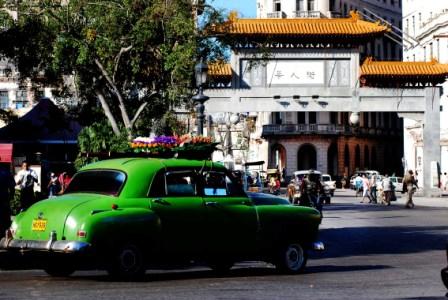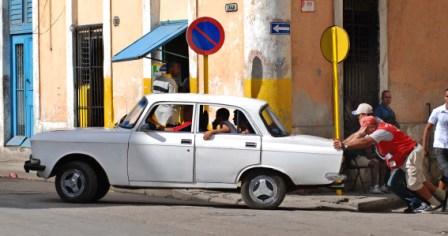Cuba Municipalities & the Reforms
The Cuban municipal system holds potential, despite all its limitations.
Haroldo Dilla Alfonso

HAVANA TIMES, Dec. 3 — One of the most striking omissions in the “Draft Economic and Social Policy Guidelines” is unquestionably the issue of government decentralization and municipalities.
As it is held up as the document proposing to outline the course of development for at least the next five years, I would consider this an inexcusable omission.
This occurred because the dynamics of globalization — from which Cuba cannot escape, no matter how hard it tries — is precisely the repeated violation of national states (the key political achievement of capitalist globalization in the 18th century) and the selective introduction/marginalization of sub-national regions. Consequently, the idea of sustainable development is impossible without an integral vision and goals that incorporate societies and active local governments.
The Guidelines dedicate four points to the territorial issue (where they simply say that local governments should remain separate from management (services and utilities), that they should delimit functions between themselves and the central government, and that it is necessary to emphasize local development perceived as local self-sufficiency, which is conceded to the municipalities especially in the area of the food production).
Then there are some allusions to the issue, with the most interesting being where they mention Special Development Areas in the section on foreign-owned investment. For all intents and purposes, these are explained in such a way that we do not clearly know if they are referring to the Venezuelan experiments of the same name, the immense special areas in China, or both of these. In other words, they may be sentimentally alluding to the adventures of our Bolivarian comrades, while objectively pointing to the pockets of the post Deng Xiao Ping generation.
For me, the easiest thing to say would be that they don’t know what they’re talking about, and then laugh at the supposed ignorance of the Cuban leadership while contemplating my navel. However the issue is much more complex. It is indeed likely that the authors of the Guidelines don’t know some things, but it is also probable that even knowing what they do, they don’t want to carry it out. Or that they know and they want to do it, but they’re not able. This latter scenario is what is really happening with regard to this issue, and I fear that in most of the document.
The technocratic business-managerial sector that heads the military knows where it’s going: they are turning into the bourgeoisie in the heat of the relationship with the global capitalist economy and negotiating away the country from their position as the holders of a quasi-monopoly on political power. And, in technical terms, they operate many of the levers to be able to do this.
Their limit is not cognitive, but political, since it’s very difficult to accomplish this without committing fatal errors in their power play. They sense they cannot take their adjustment beyond certain limits, but nor do they want to assume paralyzing commitments in the face of those same limits.
They don’t speak of workers or community participation
That’s why the Guidelines are particularly careful not to establish commitments with the working sectors, nor do they speak of labor or community participation, and they avoid all institutional references. As the saying goes, it speaks continually of love while never mentioning sex.

The municipalities are placed in this same bag. The Cuban political class disqualifies them and reduces them to nothing. And this is not the first time that they have done this. One reason is that these are areas of potential political conflict; they are where people lead their daily lives, where they have been taught to ask and wait for responses; and where, lastly, the government enters into direct contact with the citizenry.
It is worthwhile recalling a bit of history. The Cuban municipal system has been the most original and dynamics element of the post-revolutionary political system. In fact, when it was created in 1976, it was the most advanced municipal system within the entire Soviet bloc; moreover, it was also more advanced than many Latin Americans municipal systems.
There were weaknesses, of course. Within it there was nothing resembling municipal autonomy; they didn’t even have direct access to the market and these systems were guided by “soft” budgets assigned centrally. But inserted in an economic model with relatively abundant resources, they had the possibility of directly or indirectly satisfying public demands around their daily lives, particularly in small and medium-sized villages. Between the government and public, an interesting lattice of participation existed. It was said back then that the representative bodies of Popular Power were popular but had no power.
Without resources the municipalities became less popular
When the crisis hit, municipalities began to become less “popular” to the same degree that their allocations of resource declined. Accordingly, city councils lacked the power to mobilize their own resources in their jurisdictions or in the international environment.
If in 1986 the success of a delegate was measured by the number of demands they received (a sign of confidence on the part of their constituents), since the end of the 1980s these representatives were measured by the number of demands they could reject.

This was when people began to talk about the need to “improve” the municipal system in at least in three directions: granting it more authority, resources and functions through the government decentralization; making them more autonomous through their own laws; and making them more democratic through energizing their spaces for participation, transparency and selection.
This demand was at the center of the positions raised in the assemblies that preceded the Fourth Congress of the Communist Party of Cuba [1991] and in government technical and professional groups as well as in the incipient civil society. It was then that there appeared unprecedented community activity that, accompanied by activists and academics, decided to take advantage of the “tolerance by omission” of polices that characterized the 1990-1996 period.
In the end, the political class decided to restore order in the sole way it knew how: the consultations taking place were canceled and those organizations that had been involved in those processes were subordinated or dissolved (on occasion through harsh political repression, as occurred to the Center for the Study of America [CEA] and Habitat-Cuba). The community experiences were diverted into “popular councils,” which were sub-municipal bureaucratic mechanisms that remain as barren institutional testimonies of that process.
What many of us perceived as the point of departure for a system that is decentralized, participative and committed to local development, was turned into an end point for the governability of the centralized and authoritarian political régime.
I don’t know what happened in the public discussions that took place a few years ago, and whose results have never been made public. But I’m sure that the municipal issue was again raised simply because it’s indispensable. And I am sure that it was much more than what was spelled out in Guidelines, where they are seeking to produce inexpensive food and public tranquility for the sake of survival, while the political elite continue their process of middle-class conversion.
Latent potential
The Cuban municipal system, despite all its limitations, continues to hold potential. For example, the Cuban municipalities have been able to avoid fragmentation and they are conserved as consistent territorial and demographic units, contrary to a good part of their Latin American counterparts that lack the indispensable to plan development.
They also possess enviable human resources and their administrative councils and assemblies are composed of people with high levels of education, social sensitivity and administrative experience. If what is involved is the advance toward more balanced territorial development through the formation of production and service linkages, then the formation of strong, transparent and participative municipalities is not an alternative that can discounted.
For many reasons, this is an area that will require particular attention in the Cuba of the future — in the Republic “with all and for the well-being of all” that we are obligated to consider — where democracy, development and social justice should reign above any other doctrinal consideration. It is not the sole one, of course, but it is indeed the most important.
It is probable that, given its importance, the authors of the Guidelines have preferred to keep the issue in the back of the closet. Perhaps for that reason Jose Marti once called the municipalities “the vital fluid of freedom.”





